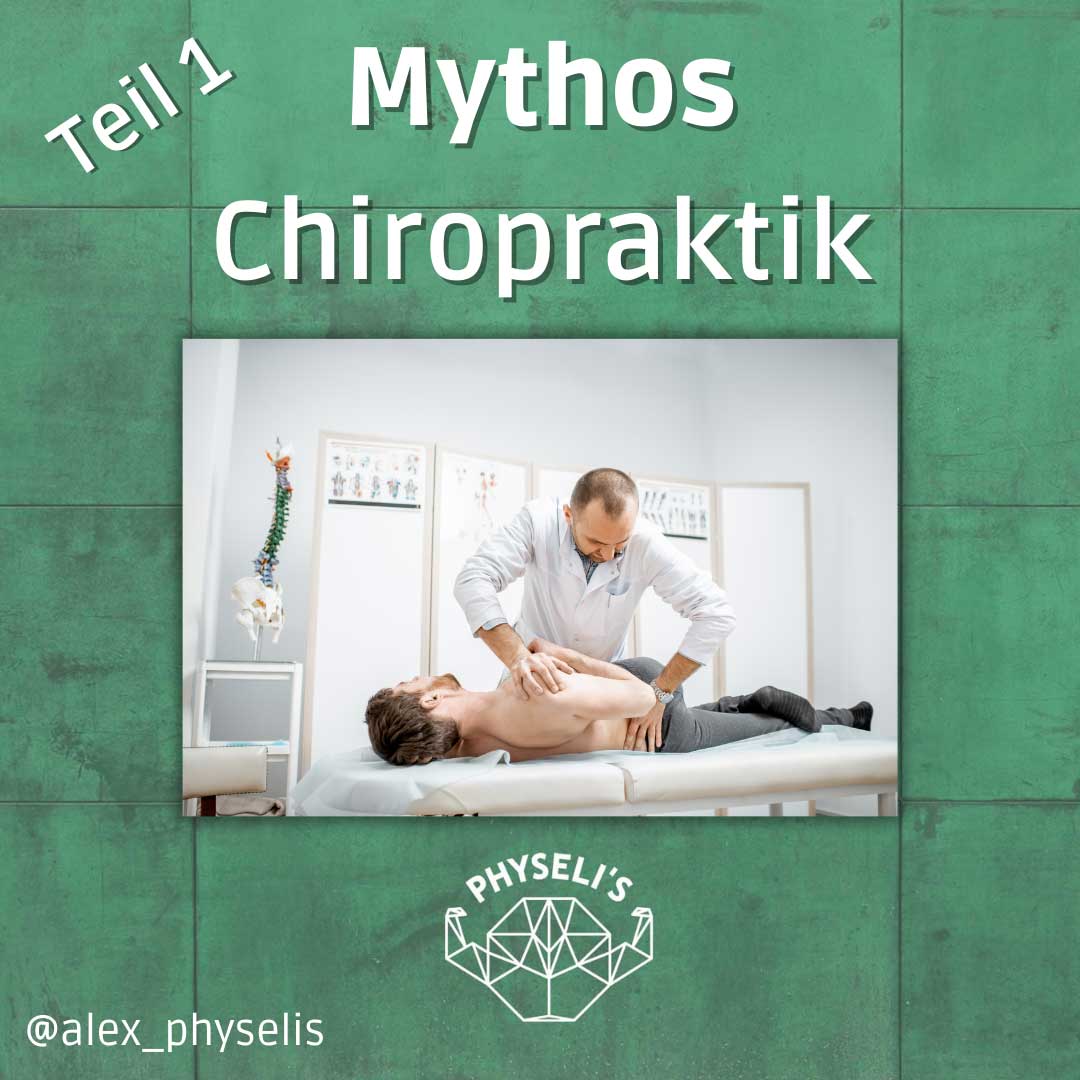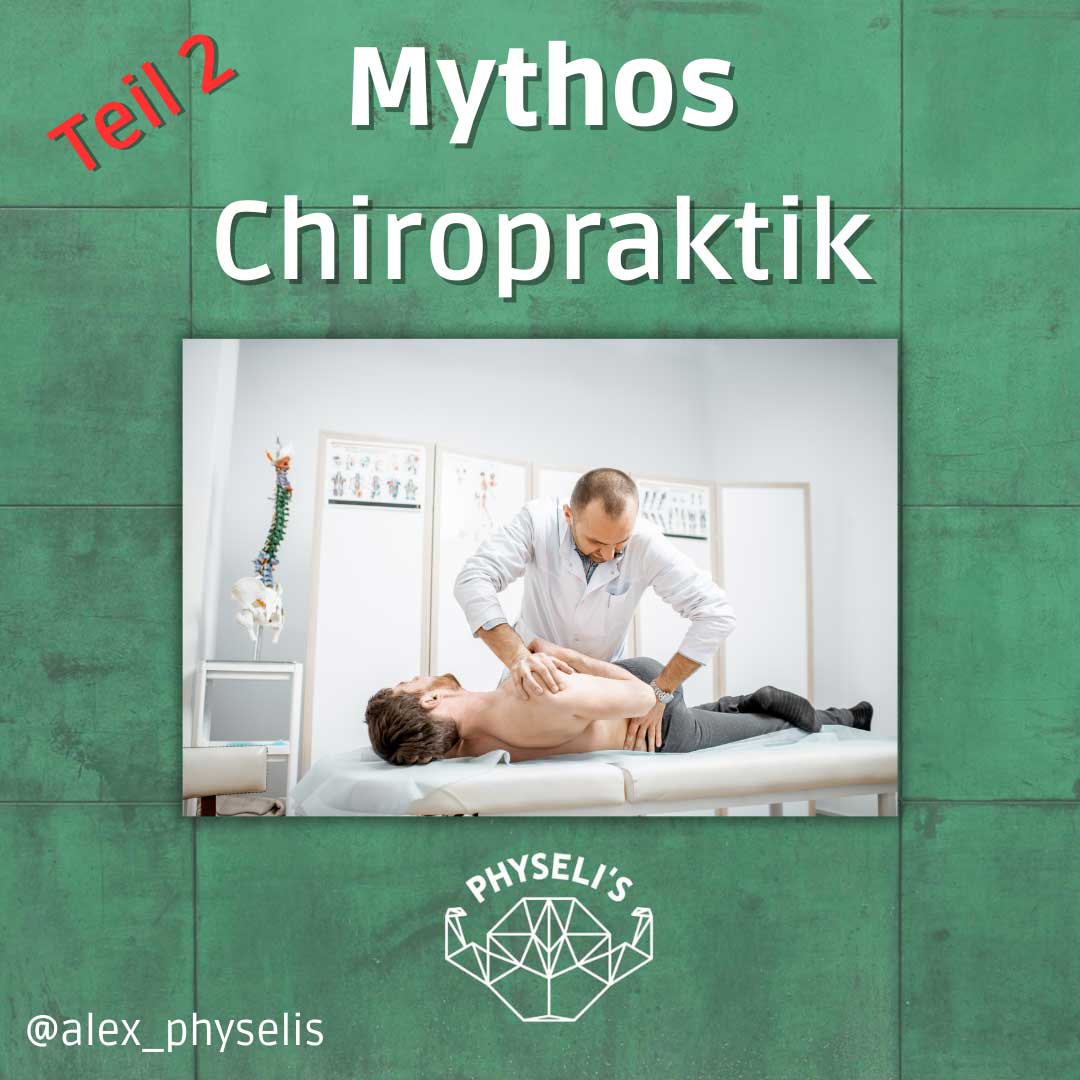Introduction
Chiropractic is an alternative medical treatment method with the aim of finding functional disorders in the spine and eliminating them with simple movements or manipulations.
The founder of modern chiropractic was Daniel David Palmer (1845-1913).
There are several stories surrounding its origins, one of which is about physical and medical information from a mysterious spirit world.
Explanatory model
The original explanatory model of chiropractic is based on so-called subluxations of vertebral bodies (= displaced and/or blocked vertebrae).
These subluxated vertebrae would subsequently affect the nervous system and thus trigger all kinds of illnesses or pain conditions.
If these various misalignments of the vertebrae are pushed back into their intended positions using manual techniques, the result would not only be symptom relief, but healing.
Straights vs. Mixers
Today, chiropractic is a divided discipline.
On the one hand, there are the “straight chiropractors”, who adhere to the basic idea of D.D. Palmer that almost all diseases originate from misalignments of the spine and that these must be corrected manually.
On the other side is the group of “mixed chiropractors”, who also support the theory of subluxations, but also recognize other causes of disease (fortunately, this group is in the majority).
Simply adjust?
But is there actually any evidence for the foundation of chiropractic?
Can vertebral bodies really slip out of place and need to be readjusted?
No, there is no evidence for this and it is not anatomically plausible.
This became known back in the 1970s when Dr. Edmund Crelin, a well-known anatomist at Yale University, examined and tested the spines of 6 people who had recently died.
Regardless of the force applied, there was no nerve compression.
Furthermore, the assumption that nerve interference is a major cause of disease is contrary to established anatomical facts.
Facts instead of myths
A 2009 review found that there is a significant lack of evidence for chiropractic subluxation.
Subluxation has never been demonstrated on any examination, x-ray or other imaging.
There is also no evidence that a subluxation is associated with any disease process or causes suboptimal health conditions that require intervention.
Despite its popularity, the construct of subluxation thus remains in the realm of unfounded speculation and has no valid clinical applicability.
Furthermore, there is no evidence that the disruption of a nerve from a vertebral segment can cause an organic disease.
Stability
There is no evidence to support the basic assumption of chiropractic.
Most dislocations occur in areas other than the spine (e.g. shoulder) and are the result of an injury.
Spondylolisthesis (slipped vertebrae) is usually congenital or caused by degenerative changes and in the vast majority of cases causes no symptoms.
The spinal column is surrounded by a massive ligamentous apparatus which, together with the muscles, provides an enormously strong protective structure for the individual vertebral bodies.
A vertebral luxation is virtually impossible without serious injury.
And in such a case, surgical rather than chiropractic treatment is required.
To be continued…
But why are chiropractic treatment methods still so popular (especially on social media) and how is it possible to feel better after such treatment?
We look at this and much more in part 2…
Sources:
- Crelin E.S., A scientific test of the chiropractic theory.
American Scientist.
1973; 61: 574-580 - Ernst, E. (2008).
Chiropractic: A critical evaluation.
Journal of Pain and Symptom Management, 35(5), 544-562.
https://doi.org/10.1016/j.jpainsymman.2007.07.004 - Homola, S. (2010).
Real orthopaedic subluxations versus imaginary chiropractic subluxations: Perspective.
Focus on Alternative and Complementary Therapies, 15(4), 284-287.
https://doi.org/10.1111/j.2042-7166.2010.01053.x - Keating, J. C., Jr, Charlton, K. H., Grod, J. P., Perle, S. M., Sikorski, D., & Winterstein, J. F. (2005).
Subluxation: dogma or science?
Chiropractic & Osteopathy, 13(4), 17. https://doi.org/10.1186/1746-1340-13-17 - Marcon, A. R., Murdoch, B., & Caulfield, T. (2019).
The “subluxation” issue: an analysis of chiropractic clinic websites.
Archives of Physiotherapy, 9(1).
https://doi.org/10.1186/S40945-019-0064-5 - Mirtz, T. A., Morgan, L., Wyatt, L. H., & Greene, L. (2009).
An epidemiological examination of the subluxation construct using Hill’s criteria of causation.
Chiropractic & Osteopathy, 17(1).
https://doi.org/10.1186/1746-1340-17-13 - A Close Look at Chiropractic wrongdoing (Quackwatch, 2022)
- Undercover Investigations of Chiropractors (Quackwatch, 2004)
💚Do you need support with your workout, rehabilitation after injury or just want to feel more comfortable and healthy in your body overall? Check out our offer or book a free online consultation.⠀




